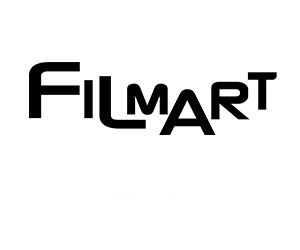HOW TO WORK THE AFM
The American Film Market is a great place to find partners for projects and films – if you have a plan. Use these steps to increase your chances of success. Watch the recording of our recent online orientation HERE.
PROLOGUE
If you have a project or script, the most effective use of your time and money is to purchase a Four Day Plus or Four-Day badge which allows access to all offices, booths and most screenings beginning on Wednesday (Day 2). If you are a producer with a finished film, purchase a Platinum or Executive Badge so you can start on day one.
The Platinum and Plus badges provides access to The AFM Sessions including all conferences and panels. Buy your badge by September 20. After that date, the fees go up.
STEP 1: Homework: Create a List of Target Companies
Hundreds of production, sales, and distribution companies have offices at the AFM but not all are right for your film. Focus your time and effort on the companies that are best suited for your project.
Starting about one month before the AFM, go to The Film Catalogue. Most AFM companies list their projects, profile and staff contact information. Do further research utilizing Cinando (all AFM badge holders receive a free one-year subscription) as well as on the web. Find the companies that are the best candidates for your film.
One of the big mistakes producers make is thinking their wonderful project or film is something that every company will want. But companies have different production profiles: budget, genre, risk, audience, distribution channel, etc.
Once you have created a target list, if there are less than 10, you’re being too picky. [“No distributor is right for MY film!”] If there are 100 or more, your homework grade is “incomplete.” Keep working. A good target list for most projects is 30 – 40 companies.
STEP 2: More Homework: Create a List of Target Executives
For each of your target companies, identify the key executives, especially those in charge of acquisitions, development and production. Look for their names in the trades (i.e. Variety, Screen International, The Hollywood Reporter and Deadline) and on company websites. If you can’t find the right names, call the company’s main office and ask.
Finding out who’s who is critical. You will never get anywhere by walking into an office unprepared and saying: “Hi, who is your head of acquisitions? I’d like to meet with them.”
STEP 3: Start Scheduling Meetings
Most companies begin setting their meeting schedule three or four weeks before the Market. The best way to contact them is to send a short, personalized email. After a few days, follow-up by phone.
Your pitch to get the meeting is just as important as your film’s pitch. When asking for a meeting:
- DO tell them how they will benefit by taking on your project or film and how it’s a good fit for their company. Tailor your meeting request to the company.
- DON’T tell them how great the project or film is, what your needs are, or why they “should” do anything.
STEP 4: Prioritize Your Target List
Separate your list into two groups: companies with an office in the city where you live and those from everywhere else. Focus first on the companies that are not based where you live. If you are unable to meet with a company from your home city during the AFM, you can always follow-up with them after the Market. Use other factors (i.e. the budgets, genres of the company’s AFM lineup, etc.) to create A and B lists with 15 to 30 companies on each list. This will help prioritize your time near the end of Market.
STEP 5: Work on Your Pitch
A good pitch can get a bad project made and a bad pitch can leave a terrific project languishing on the shelf. Pitching is part art (it’s a creative process), part science (pitches need to be organized and follow a tight script) and part salesmanship. There are many resources on pitching, so our short advice is:
- If you are madly, deeply in love with your project, if it’s your only child and the AFM is its first day of school, get someone else to do the pitch. Pitching it yourself will likely convince people that YOU love the project but it probably won’t do much more.
- While every company wants a good film they first want a profitable film. So pitch how well the film will resonate with an audience.
- In the pitch meeting, remember that YOU are being evaluated along with your project. When a company commits to your project, they are also committing to work with you.
- Your mission during each pitch meeting isn’t to sell your project. You won’t get a deal in one brief meeting. Your mission is simply: Get the second meeting!
- Consider attending the Pitch Conference Saturday morning.
STEP 6: Make More Appointments
On the first day of AFM call each target company’s AFM office that didn’t respond to your email or first call. Request a 10-minute meeting with the key executive you identified in Step 2. AFM office phone numbers are listed in the AFM Show Directory. Ask for a meeting later in the Market as most companies will be too busy during the first few days. For companies that won’t set a meeting (prepare yourself – there will be many), see Step 8 below.
STEP 7: Prepare Materials
Here are some thoughts on what to leave behind after every meeting:
- Your business card. Bring a large supply
- Your biography and those of all producers attached to the project
- A synopsis
- A summary of the film’s unique creative and financial attributes. This could include a list of all people attached or committed to the project, a budget abstract (that’s less than half a page), any rights that aren’t available, investors that are committed, production incentives that you know the film can utilize, etc.
- If the script is done, bring one or two copies with you but don’t leave it behind without first consulting with your attorney.
These are just our suggestions – every film and situation is different. Be prepared, but don’t bring copies of letters or documents that “prove” anything. It’s too soon for that.
STEP 8: It’s Showtime!
Done with your homework? Made your appointments? Confident with your pitch? Materials ready? Great! Here are your priorities:
- Arrive at every scheduled meeting on time. Be prepared to be “bumped” or delayed. Don’t take it personally – selling comes before buying.
- Visit the companies that wouldn’t schedule a meeting with you on the phone. Remember: always ask for an appointment with a specific person.
- Visit companies on your B list and those you couldn’t easily profile in Step 1. Get a feel for the product they handle and the culture of the company to see if they are the right fit for your film. Consider being a “stealth participant” by picking up brochures and business cards without introducing yourself. Don’t ask for a meeting while you are there. Call the company after you leave to schedule a meeting . . . with a specific person.
ADDITIONAL STEPS: Producers with a Finished Film
The steps above are for producers, filmmakers and writers with projects and scripts. If you have a completed film and are looking for global distribution, congratulations! Everything above generally applies but you will need to move-up the timetable:
- One month before the AFM, prepare 3 – 6 minutes of selected scenes. Do not create a consumer type trailer. Acquisition executives will want to see complete scenes to get a feel for the film. Put the selected scenes on a password protected website like Vimeo so companies you contact can view the scenes before committing to a meeting.
- When you contact your target companies, include the link to your selected scenes.
- Let them know you are arriving on Tuesday and will close a deal before the Market is over.
- Purchase a Platinum or Executive Badge so you can start on the first day.
- Make sure your attorney will be available to you throughout the AFM.
MORE – READ Advice for Filmmakers Trying to Navigate the Film Industry
Six areas of advice for filmmakers including “Know Thy Audience.” If this is the only thing you take away from reading this article it will have been worth it! Read now.
EPILOGUE
We can’t give you personal advice on how to pitch your project or film but we would like to know how this information worked for you. After the Market, please send your thoughts to AFM@ifta-online.org, Attention: Work the AFM Feedback.
Good Luck!
Copyright 2024 IFTA. All Rights Reserved. No portion of this website may be reproduced or distributed without the express written permission of IFTA.
Explore more articles and research at Producers Resources.



























